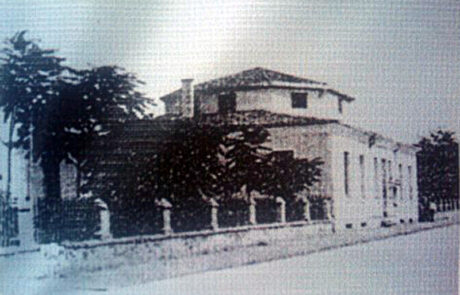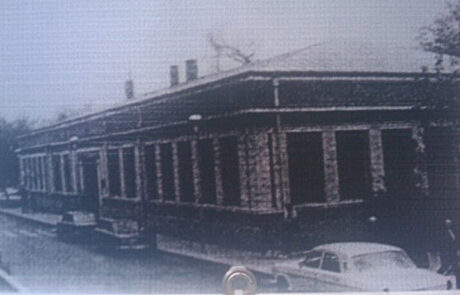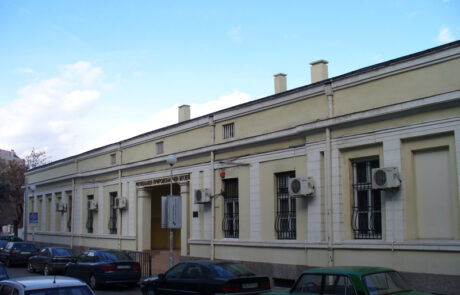Our History
1951
In 1951, the Executive Committee of the Town Council suggested the establishment of a Natural History Museum in the town of Plovdiv. The reason was that the collections had been neglected, suffering constant deterioration, and numerous specimens had been destroyed or seriously damaged. Thus, in 1952, the Plovdiv Town Council made an absolutely well-grounded decision to move the collections of minerals, fossils, animals, plants, and other natural materials to the former town-hall building that had been designated for the establishment of a Natural History Museum. However, during the transportation of the collections it was found out that many of the specimen labels had been lost and it was difficult to identify their species and origin.
1954
The general reconstruction of the building, aimed at adjusting the facility so that it could function as a museum, was launched in 1954. An exposition plan developed during the repairs was approved by the Ministry of Culture. Numerous specimens from the Bulgarian nature were gathered, and the materials were arranged in the specially allocated premises in accordance with the preliminary developed plan.
1955
Thus, on September 5th, 1955 the museum was opened as a “Temporary exhibition of materials belonging to a future Natural History Museum”, although the collections were not completed and the design scheme was not finished.
This exhibition was a great success, attracting tens of thousand citizens and visitors of Plovdiv. The low diversity of materials from Bulgaria’s nature necessitated haste in gathering specimens for the different sections – Geology, Botany, and Zoology, as well as developing scientific definitions and a new thematic exposition plan corresponding to the rich natural resources found in the country. The building was reconstructed, new premises were built, and the existing ones were reorganized.
1960
The building was reconstructed, new premises were built, and the existing ones were reorganized. The first exposition arranged in a scientific and artistic order was opened on May 8th, 1960, illustrating Bulgaria’s flora, fauna, and geology. This exposition consisted of several sections – “Evolution in organisms and inanimate nature”, “Plants”, “Invertebrates”, and “Vertebrates – fish, amphibians, reptiles, birds, and mammals”. This laid the beginning of the Museum’s future development.
1970
The scientific stocks of the museum were established in the period 1970–1971, covering the sections of “Geology”, “Botany”, “Zoology of Invertebrates”, and “Zoology of Vertebrates”. The first premises intended for a Museum Library were also built. They were equipped with shelves and bookcases, making possible the classification of literature by sections.
1974
In 1974, as a result of the enormous research work done by the staff and the scientific advancement of the museum, the exposition was further enlarged, including new sections such as “Minerals from the Rhodope Massif”; overall reconstruction and artistic arrangement of the exposition in the “Geology” Hall; “Edible and poisonous mushrooms in Bulgaria”; “Protected natural sites and plants in Plovdiv region”; a new decorative scheme in the “Botany” Hall; as well as a central diorama in the “Invertebrates” Hall with new exotic clams, snails, corals, sponges, etc.
The first “FRESHWATER AQUARIUM” in the expositions of Bulgaria’s Natural History Museums was established in 1974 in the Museum’s basement premises. Situated on an area of 100 m2, the facility harbors more than 32 aquarium fish species and exotic plants arranged in 48 beautiful aquariums. The central diorama in the foyer of the museum was arranged in 1976, including bird and mammal specimens. New glass showcases were arranged in the “Birds” and “Mammals” Halls.
1979
In 1979, new showcases with recently acquired materials were opened in the “Geology” Hall, showing semiprecious stones from the Rhodope Mountains. In 1981-1982, the “Birds” and “Mammals” Halls were rearranged in connection with the World Hunting Exhibition. One of the most interesting and rarest specimens of the biggest snake in the world – the Anaconda, was restored. In 1985, following the reconstruction of the basement premises, new halls were built – “Fish”, with a new thematic exposition plan, dioramas, bio-groups, and a systematic collection, and “Sea bottom”, showing unique exotic specimens such as snails, clams, corals, and star-fish from the beaches of Angola. In the same year a new exposition hall was set up – “Amphibians and reptiles”, arranged under a new thematic exposition plan and interior design. Overall improvement of the existing exposition was done in the period 1988-1993 with a stronger emphasis on the ecological aspect in all exhibition halls, new materials and showcases, as well as rearrangement of the already existing vitrines and dioramas.
2006
In 2006 the museum was given a new name – REGIONAL NATURAL HISTORY MUSEUM. It became a methodical center of the natural history museums, “Nature” departments, and the museum collections in Southern Bulgaria. The Regional Natural History Museum – Plovdiv is the second biggest museum in the country, harboring a modern exposition with a strong emphasis on nature conservation.
More information
Contact us for information on opening hours, prices and events.
*Visitors with disabilities can get around everywhere in the exhibitions.




